20+ most popular stem plants for the background of planted tanks
Background plants are the tallest and they make a huge difference in the appearance of the planted tank. There are many stem plants for the background with different colors and leaf shapes and it may become overwhelming to know the right one to choose for your tank. This article will focus on some of the most common stem plants that you can use to create an amazing impression in your tank.
- Rotala indica (rotundifolia)
- Rotala macrandra – Giant Red Rotala
- Rotala wallichii
- Ludwigia repens – Water Primrose
- Ludwigia repens 'Rubin' (Super Red)
- Ludwigia arcuata – Needle Leaf Ludwigia
- Hygrophila corymbosa – Temple plant
- Hygrophila pinnatifida
- Hygrophila difformis – Water Wisteria
- Myriophyllum mattogrossense
- Myriophyllum tuberculatum – Red Millfoil
- Limnophila aquatica – Giant Ambulia
- Limnophila sessiliflora – Dwarf Ambulia
- Limnophila aromatica – Ambulia conferta
- Ammannia gracilis
- Cabomba caroliniana – Green Cabomba
- Eleocharis montevidensis – tall hairgrass
- Vallisneria spiralis – Jungle Val
- Heteranthera zosterifolia – Stargrass
- Mayaca fluviatilis – Bogmoss
- Pogostemon erectus
Rotala indica (rotundifolia)
- Care level: easy
- Growth: fast
- Height: 6 – 12+ inches (15 – 30+ cm)
- Lighting: average
- CO2: average
This is one of the most common background plants used in aquariums and it is popular among beginners and experts because it is easy to manage. It is a fast-growing plant with small leaves that would appear red under good lighting and temperature.
Another reason why it is considered a good plant for beginners is that it can do well without CO2 injection. Therefore, it is an excellent plant for low-tech aquariums. However, it would benefit from the addition of iron-rich fertilizers and trace elements.
Since it is a fast-growing plant, it requires frequent trimming to keep it in good shape. New branches shoot from the internode on the stem and it would eventually become bushy with a thick canopy.
Rotala macrandra – Giant Red Rotala
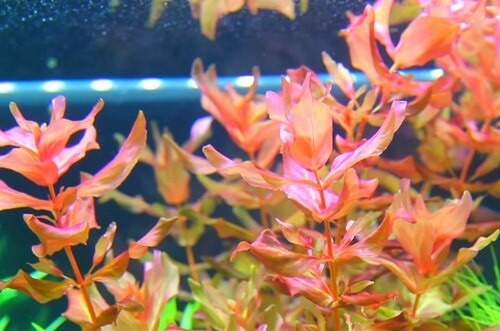
- Care level: advanced
- Growth: average
- Height: 8 – 12+ inches (20 – 30+ cm)
- Lighting: high
- CO2: high
This is another good candidate that can be used as a background plant in an aquarium. Unlike Rotala indica, this species requires some level of experience and may not be ideal for beginners. However, it is a fast-growing plant that requires frequent trimming to maintain its shape.
The plant is fragile and may rot after planting if you do not know how to handle it. It would perform in a tank with sufficient light and CO2 injection. Iron supplements will also enhance its reddish appearance making it stand prominent as a background aquarium plant.
Rotala wallichii
- Care level: advanced
- Growth: average
- Height: 4 – 12+ inches (10 – 30+ cm)
- Lighting: high
- CO2: high
Rotala wallichii is another demanding aquarium plant that may not be ideal for beginners. It makes a spectacular impression with its height and long narrow red leaves. Perhaps, this plant has the narrowest leaves among all red aquatic plants and this gives it a unique appearance in the background.
It requires sufficient light and CO2 injection for good growth. When all these requirements are met, it is a fast-growing plant and would require frequent trimming.
Ludwigia repens – Water Primrose
- Care level: easy
- Growth: fast
- Height: 8 – 12+ inches (20 – 30+ cm)
- Lighting: average
- CO2: average
Water primrose is another excellent aquarium background plant for any planted aquarium. It has round leaves growing in the opposite direction of the stem and the color of this plant changes from green to red depending on the intensity of light.
Water primrose is a tough plant that would grow well under low CO2 making it ideal for beginners. However, the colors of the leaves would fade under poor lighting. When there is sufficient lighting, the upper part of the leaves appears greenish while the lower part appears red or brown.
Ludwigia repens ‘Rubin’ (Super Red)
- Care level: easy
- Growth: average
- Height: 8 – 12+ inches (20 – 30+ cm)
- Lighting: average
- CO2: average
This is a red background plant that is easy to grow and maintain. It would survive under moderate light and CO2 but its lower leaves tend to fall off when the lighting conditions are poor. If you want to achieve an intense red color that would be striking, then you need to introduce sufficient light.
It is a fast-growing plant that requires regular trimming. You can replant the stems that you cut to achieve a dense bush faster.
Ludwigia arcuata – Needle Leaf Ludwigia
- Care level: average
- Growth: average
- Height: 8 – 12+ inches (20 – 30+ cm)
- Lighting: high
- CO2: high
This is one of the most popular aquarium plants with needle-like red leaves. The unique shape and color of the leaves are the reasons why this plant is desirable among hobbyists.
This plant may not be ideal for beginners, as it requires constant monitoring and some level of experience. It may decay immediately after planting so you should handle this plant with care. It requires a high level of light and CO2 as the color would fade if these conditions are not present.
Hygrophila corymbosa – Temple plant
- Care level: easy
- Growth: fast
- Height: 8 – 12+ inches (20 – 30+ cm)
- Lighting: low
- CO2: low
Temple plant is another awesome background plant for beginners. It is a fast-growing plant that can reach tremendous heights with bright green leaves. Unlike most aquarium plants, it is undemanding and can grow very fast under low light and CO2. That notwithstanding, this plant would still benefit from CO2 injection and sufficient lighting.
Its large evergreen leaves can grow out of the aquarium when left unchecked. Therefore, it requires regular trimming as new plants would shoot from the stem making it appear bushy over time. You can always split the rootstock and plant it separately to establish it faster.
Hygrophila pinnatifida
- Care level: moderate
- Growth: average
- Height: 6 – 12+ inches (15 – 30+ cm)
- Lighting: average
- CO2: average
This is a unique plant that can be adapted for many uses in an aquarium. It can be planted as a background plant into the substrate or on woods and rocks because it is also an epiphyte. Another impressive thing about this plant is that it can grow well under moderate lighting and CO2.
Apart from its uniqueness to grow on any surface, it also has pinnate leaves that are either red or green depending on the amount of light it receives. Under good conditions, it appears red and provides a good contrast with other plants in the tank.
It is a fast-growing plant, which requires frequent trimming to maintain its shape and prevent it from shading other plants.
Hygrophila difformis – Water Wisteria
- Care level: easy
- Growth: fast
- Height: 8 – 12+ inches (20 – 30+ cm)
- Lighting: low
- CO2: low
The leaves of this plant are perhaps the reason why it is a unique background plant. Outside of water, the leaves appear round but become branched and pinnate when submerged. It is an interesting plant that is common for its unique leaf shapes.
It is a fast-growing beginner’s plant that is very easy to propagate. Almost any part of the body including the leaves can develop into an entire plant and it does not require a high level of CO2 and light to do well. However, good lighting helps it to develop the unique pinnate leaves.
Myriophyllum mattogrossense
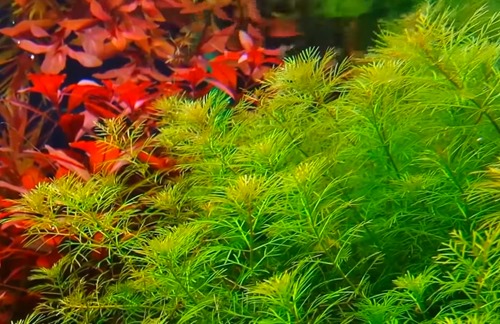 Myriophyllum mattogrossense #ad
Myriophyllum mattogrossense #ad
- Care level: easy
- Growth: fast
- Height: 8 – 12+ inches (20 – 30+ cm)
- Lighting: average
- CO2: average
This is one of the best aquarium plants for beginners with a fast growth rate under moderate light and CO2. It has unique bright green feather-like pinnate leaves and red stems.
It is an amazing background plant with a distinctive appearance. It creates an amazing contrast when planted in the background together with other plants with different leave colors and shapes. It is a fast-growing plant that requires frequent trimming to maintain its shape.
Myriophyllum tuberculatum – Red Millfoil
- Care level: advanced
- Growth: fast
- Height: 8 – 12+ inches (20 – 30+ cm)
- Lighting: high
- CO2: high
Red Millfoil is an advanced type of background plant that might require some level of experience. It makes a beautiful background plant with its red pinnate leaves that grows in a circle on reddish-brown stems.
It is a fast-growing plant under optimum conditions. However, it is difficult to grow and requires CO2 injection as well as the addition of nutrient supplements. The red color of its feather-shaped leaves creates a nice contrast with green plants in the tank.
Limnophila aquatica – Giant Ambulia
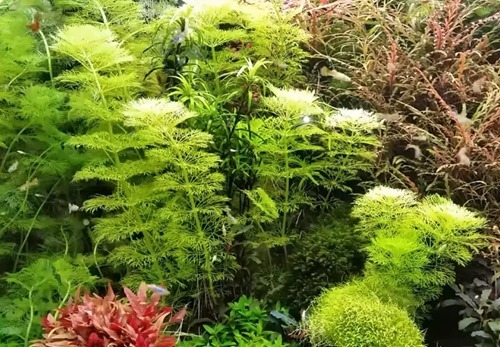
- Care level: average
- Growth: fast
- Height: 8 – 12+ inches (20 – 30+ cm)
- Lighting: average
- CO2: high
This plant is the largest in the Limnophila genera and with few stalks, it would still command attention in your tank. It has bright green feathery leaves that whorl on a giant stem and requires a lot of space to grow well. If left untouched, it would eventually grow above the water surface and develop purple flowers.
Giant Ambulia is a fast-growing species that need a high amount of CO2 and light to perform well. Under poor lighting, the leaves would turn yellow and fall off. The major challenge with this plant is that algae grows on its soft delicate leaves and is difficult to clean.
Limnophila sessiliflora – Dwarf Ambulia
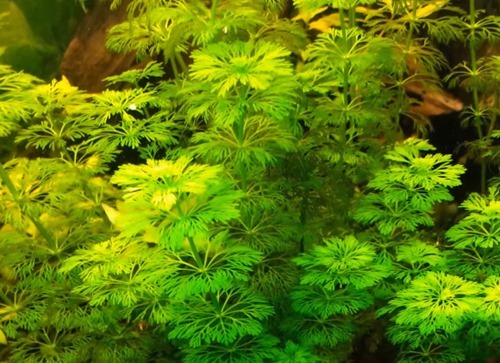
- Care level: easy
- Growth: fast
- Height: 6 – 12+ inches (15 – 30+ cm)
- Lighting: low
- CO2: low
The Dwarf Ambulia is another background plant that is easy to grow under low lighting and good for beginners. It is still possible to achieve fast growth without CO2 injection. It is a great alternative for the Giant Ambulia if you are a beginner.
It has feathery bright green leaves that grow in circles around the stems. It grows very fast and can be established in almost any aquarium. Because of this, you have to trim it regularly to maintain its appearance. You can replant the cuttings to establish this plant faster in the aquarium.
Limnophila aromatica – Ambulia conferta

- Care level: moderate
- Growth: average
- Height: 8 – 12+ inches (20 – 30+ cm)
- Lighting: average
- CO2: average
Ambulia conferta is a beautiful aquarium plant that is unique for its color and leaf texture. It is attractive when used as a background plant as it stands out because of its colors. The leaves have serrated edges and the young ones appear pink or red depending on the intensity of the light. The plant requires intense light and CO2 to keep its leaves bright.
Ammannia gracilis
- Care level: moderate
- Growth: average
- Height: 8 – 12+ inches (20 – 30+ cm)
- Lighting: average
- CO2: average
Ammannia gracilis would make an excellent background plant for any tank. Under intense light, the leaves become colorful and bright but they would appear green and may fall off when there is insufficient light. The leaves also have a unique appearance as they slant upward and grow on opposite sides of the stem. This plant is easy to grow and would do well once it has been established in a tank.
Cabomba caroliniana – Green Cabomba
- Care level: easy
- Growth: fast
- Height: 8 – 12+ inches (20 – 30+ cm)
- Lighting: average
- CO2: low
Green Cabomba is an excellent background plant for beginners. The bright leaves form series of circles on the dark stem making this plant appear as a brush used for cleaning bottles. It is easy to plant and it grows rapidly under favorable conditions.
It can grow well under moderate light and low CO2. Under low light, this plant would lose its leaves and the stem may become rotten. Frequent transplanting and trimming may kill this plant or make it appear rough until it stabilizes again.
Eleocharis montevidensis – tall hairgrass
- Care level: easy
- Growth: average
- Height: 8 – 12+ inches (20 – 30+ cm)
- Lighting: average
- CO2: average
The tall hair grass creates an appearance that resembles a grassy field that makes it an excellent background plant for some planted aquariums. It has tall narrow leaves and very easy to grow. Once established, old plants send runners from which new plants would grow.
This tall hair grass creates a perfect hiding place for fish that loves dense bush. This plant will also benefit from CO2 injection and adequate exposure to light. You need to trim it regularly as it can grow rapidly and sometimes above the water surface if left unchecked.
Vallisneria spiralis – Jungle Val
- Care level: easy
- Growth: fast
- Height: 8 – 12+ inches (20 – 30+ cm)
- Lighting: low
- CO2: low
The Jungle Val has been popular among the hobby for many years. It is a hardy plant that has a rapid growth rate and would do well in most tanks. Because of its height and ability to grow under low CO2 and light, it is preferred by many as an excellent background plant in an aquarium. They also grow firm roots making them ideal for tanks with aggressive fish that loves disturbing aquarium plants.
Heteranthera zosterifolia – Stargrass
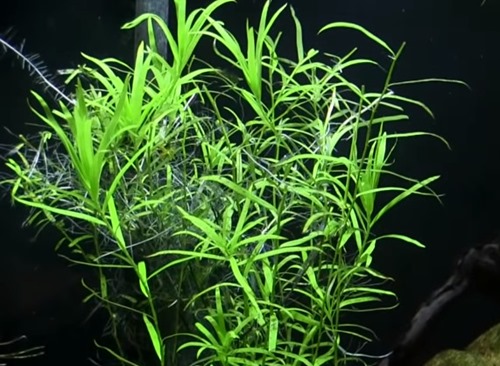
- Care level: easy
- Growth: fast
- Height: 8 – 12+ inches (20 – 30+ cm)
- Lighting: average
- CO2: average
Stargrass serves as an excellent background plant in the aquarium for someone looking for something unique. Its young leaves are bright green, large, and very attractive. However, it requires constant trimming to maintain a dense bush with bright star-like leaves. Also, trimming it regularly will prevent the upper leaves from shading the lower ones which would turn black if there is insufficient light.
Mayaca fluviatilis – Bogmoss
- Care level: moderate
- Growth: fast
- Height: 6 – 12+ inches (15 – 30+ cm)
- Lighting: average
- CO2: average
Bogmoss with needle-like leaves and delicate stems is perfect as the background of small planted aquariums. It is a fast-growing plant as long as there are sufficient light and additional CO2. The leaves are usually bright but could turn white at the tip as an indication of a lack of nutrients, especially iron.
Pogostemon erectus
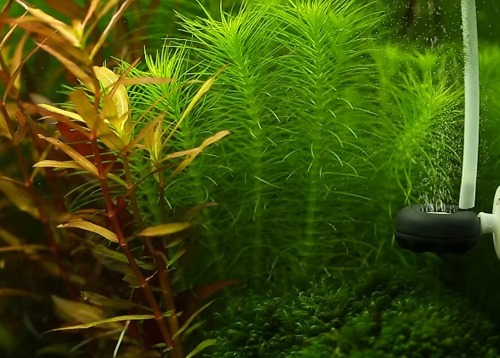
- Care level: average
- Growth: average
- Height: 6 – 12+ inches (15 – 30+ cm)
- Lighting: average
- CO2: average
Pogostemon erectus with its bright and needle-like leaves appears more beautiful when planted together in the background. A planted tank background with this plant appears as a dense forest with coniferous trees in your tank.
It would grow in either soft or hard water provided there is sufficient CO2 and lighting. This plant also grows faster in the presence of fertilizers. It would require frequent trimming to keep it in good shape.

 Rotala rotundifolia #ad
Rotala rotundifolia #ad Rotala wallichii #ad
Rotala wallichii #ad Ludwigia repens #ad
Ludwigia repens #ad Ludwigia repens Super Red #ad
Ludwigia repens Super Red #ad Ludwigia arcuala #ad
Ludwigia arcuala #ad Hygrophila corymbosa #ad
Hygrophila corymbosa #ad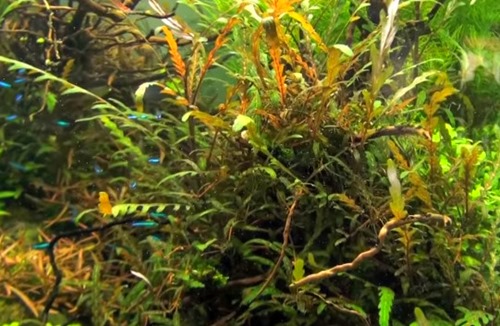 Hygrophila pinnatifida #ad
Hygrophila pinnatifida #ad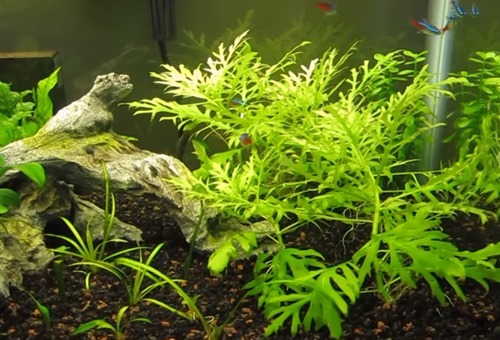 Hygrophila difformis #ad
Hygrophila difformis #ad Myriophyllum tuberculatum #ad
Myriophyllum tuberculatum #ad Ammannia gracilis #ad
Ammannia gracilis #ad Cabomba caroliniana #ad
Cabomba caroliniana #ad Eleocharis montevidensis #ad
Eleocharis montevidensis #ad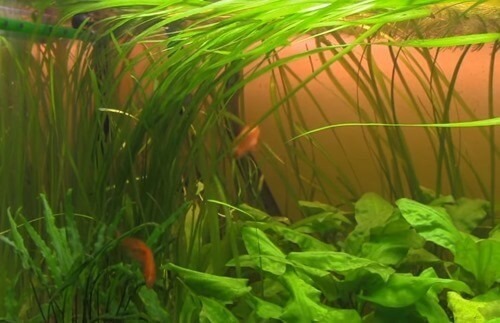 Vallisneria spiralis #ad
Vallisneria spiralis #ad Mayaca fluviatilis #ad
Mayaca fluviatilis #ad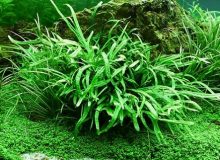
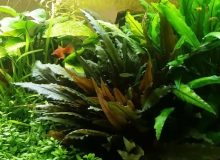
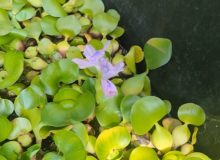
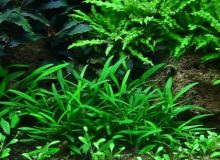
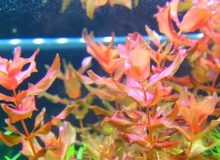
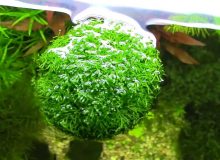
Leave a Reply